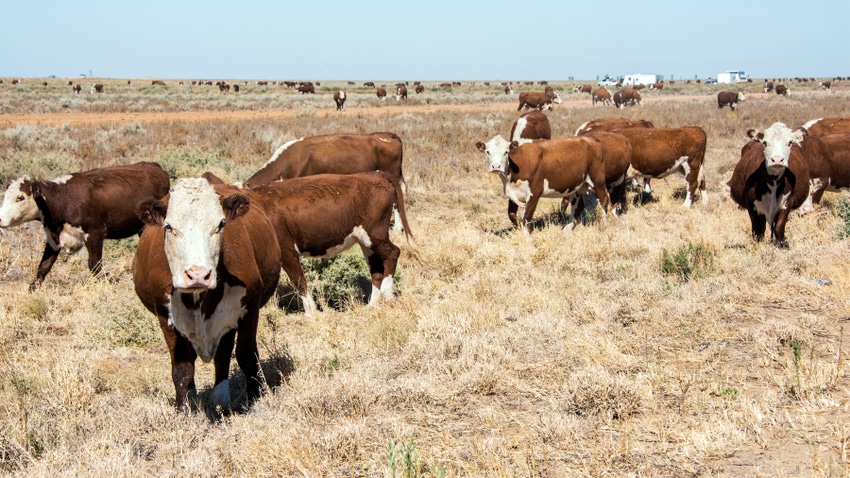
With varying levels of drought afflicting the Dakotas the last several years, North Dakota State and South Dakota State universities created tools to help growers manage rangeland through dry conditions this year.
According to the U.S. Drought Monitor, as of March 21, South Dakota is experiencing D0 to D1 conditions, labeled as “abnormally dry” and “moderate drought,” respectively. Some parts of the state are not experiencing drought. In North Dakota, D0 to D2 conditions are seen, with the northern Red River Valley experiencing D2, “severe drought.”
According to NDSU, the severity of impacts depends on the drought’s level but may include:
lack of forage
lack of drinking water
increased number of fires
reduced livestock performance
increased soil erosion
Counting on rain?
While no one knows if spring will bring rain for the region, April 1 is suggested by SDSU as the trigger date to investigate conditions. Ask yourself these questions:
How much forage was produced during last year’s growing season?
How much precipitation was received during last year’s growing season?
How much precipitation was received during the fall and winter?
How much soil moisture exists now?
What are the rapid drought indices showing now?
There is no special prescription for drought management. Good range management is good drought management, according to NDSU. Stocking conservatively, resting pastures and using weather predictions to adjust stocking rates might benefit your ranch.
Online planning tools
Extensions in both North and South Dakota, along with national services, offer tools online to help manage drought:
Rangeland Analysis Platform. RAP highlights pastures on a satellite map. The software will automatically calculate an end-of-season forage estimation for the selected year or years. It can also compare current forage production with a normal year.
U.S. Drought Monitor. Focusing on a region, the monitor lets producers see drought intensity county by county. Ranging from D0 (abnormally dry) to D4 (exceptional drought), the map is accompanied by a written summary sharing how weather patterns might be impacting drought. North and South Dakota are included in the High Plains region.
South Dakota Mesonet. The ag weather tool can compare the current year’s precipitation to a 30-year average, give access to archive records of past climate records and share current soil moisture levels at varying depths. Under “Climatologist” and then “Drought Dashboard,” ranchers can see the last monitoring tools and drought forecasts alongside other information.
USDA Drought Calculator. From the USDA Natural Resources Conservation Center, this calculator can help assess the impacts of drought on forage production. It uses data from local weather stations and measures current precipitation to estimate forage production impacts.
NDSU Extension publications. Its library of beneficial publications can help ranchers and land managers work through drought conditions, including suggesting alternative feedstuffs and managing ranch stress.
Drought hitting your ranch isn’t a matter of “if” but “when.” Break the cycle of reacting to drought conditions and start planning ahead through proactive ranch and rangeland management. Having a strategy for when drought does come to your ranch can help limit financial losses while keeping rangeland health optimum. Contact your local or state Extension office for more drought planning and preparation information.
North Dakota State and South Dakota State universities contributed to this article.
About the Author(s)
You May Also Like






